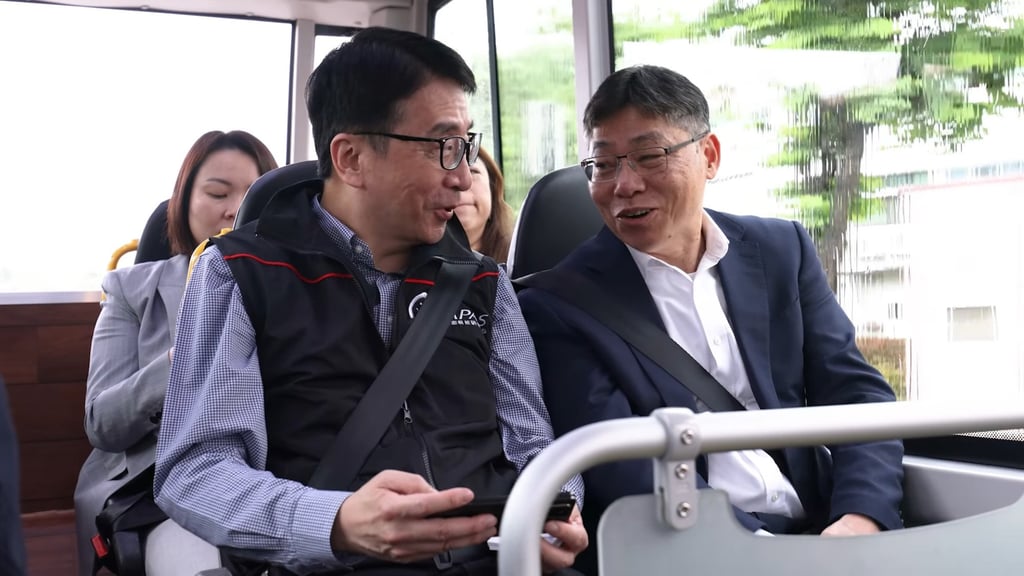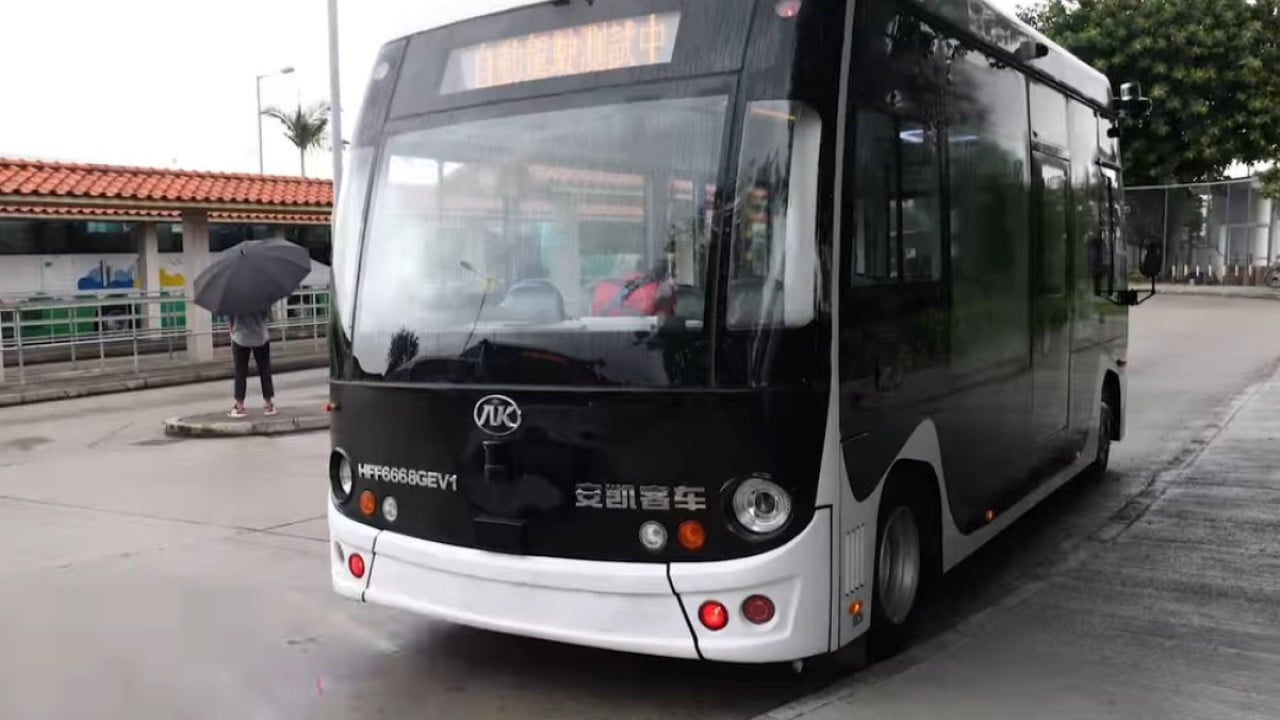Hong Kong is testing out eight autonomous vehicles under a HK$127 million (US$16.3 million) initiative to advance driverless technologies and other projects, with a minister saying the scheme’s progress matches developments seen in mainland China and overseas.
Secretary for Transport and Logistics Lam Sai-hung said on Saturday he expected the public would have more opportunities to try driverless cars in the future and the results so far were promising.
“Among the eight autonomous vehicles currently being tested in Hong Kong, their driverless technology has reached level four of ‘highly automated driving’,” he said, referring to a performance level where a vehicle can handle most driving tasks independently.
The government had so far invested HK$60 million into driverless cars and another HK$67 million into technologies related to the internet of vehicles (IoV) under the Smart Traffic Fund, he said.
IoV refers to a network of connected autonomous vehicles that uses a cloud system to share location data and information on other objects in their surroundings, such as roadside units, pedestrians and buildings.
“The progress of the technological development can be said to be in line with that of mainland China and even other parts of the world,” Lam said.
He said eight autonomous vehicles were being put through their paces at five locations under the trial scheme.
The test sites put the vehicles on different types of roads and into a range of scenarios, with their locations including the Hong Kong Science Park, the offices of the Productivity Council, imported labour dormitories in Tam Mi and private housing estates.
Lam said residents of Yuen Long’s Fairview Park would be able to try out autonomous minibuses this month, with the housing estate falling under the government push to explore the applications of driverless technology.
“Earlier, the team and I from the Transport and Logistics Bureau were the first to take a ride on one of the 5G self-driving shuttle minibuses being tested in Fairview Park … I think the performance of automatic vehicles is quite good,” he said.
The minister said similar projects were likely to undergo testing in this year and next, including a trial run for an autonomous system operated by Hong Kong’s airport to transport commuters to and from the Hong Kong-Zhuhai-Macau Bridge.
Lam said authorities had actively partnered various organisations to push for the wider use of driverless technology.

“I expect the public will have greater opportunities to take a ride on autonomous vehicles,” he said.
The government in March introduced a new regulatory regime that allows for wider, more flexible trials and the use of autonomous vehicles on roads, in a bid to boost public acceptance of driverless cars.
The new regulatory system aims to help the industry conduct more extensive and flexible testing of autonomous vehicles, and to also obtain operation and application data for more complex road conditions.
Ringo Lee Yiu-pui, honorary life president of the Hong Kong, China Automobile Association, said the government needed to create appropriate policies and regulation if it wanted to develop the wider use of self-driving vehicles.
He added that sufficient infrastructure was also needed.
“In particular, the government needs to install roadside units at buildings or facilities for driverless vehicles to detect people, objects and other obstacles,” he said.
“These roadside units have to work together with smart traffic lights and smart lamp posts to allow the driverless vehicles to receive accurate signals for the enhancement of safety.”
He said autonomous vehicles were not suitable for the city’s narrow roads except in places such as the airport, which could be equipped with the necessary smart infrastructure.
Minister Lam earlier said such technology would help to prevent human driving errors and misconduct, potentially helping to make sure traffic rules were better respected.
He pointed out that the driving systems in Hong Kong and the mainland differed in terms of left- and right-hand driving, as well as traffic regulations.
Lam also said autonomous vehicles could more seamlessly accommodate differences in rules and restrictions precisely because they did not require drivers, which could help spur cross-border traffic.


